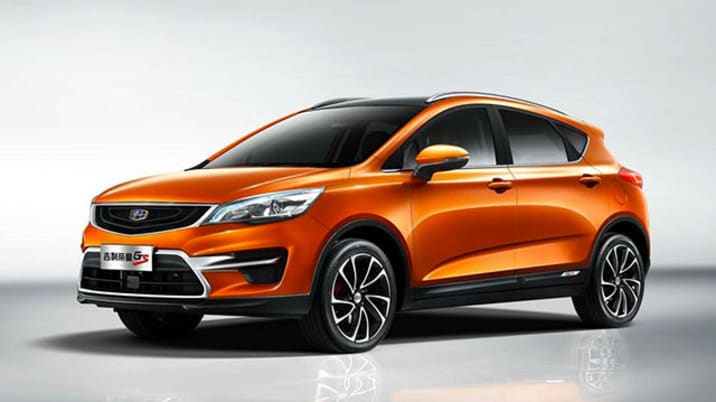We're on the verge of seeing Chinese design go from laughable to likeable.
Of course, they're not just doing this on their own. Chinese automakers are hiring skilled veterans, especially from North America and Europe, to build up their design teams as well as develop a new Chinese design ethic that will distinguish their cars from others around the world.
"We're in China. Why not use that as a basis for what we do?" says Peter Horbury, an Englishman who is now the executive vice president of design at Geely and previously worked at Volvo and Ford. "Just as the best Italian cars could not come from anywhere else, or the best German cars are very Germanic, or that Volvo is Swedish, I don't see any reason why we can't reflect the Chinese culture, which let's face it, has 5000 years of history in art."
Horbury notes that Geely is now incorporating a pattern into the front end grill that has shown up in Chinese art for hundreds if not thousands of years. It's also using it on the speaker grills. And the top of the instrument panel mimics the shape of the Hangzhou Bay Bridge, which is in Geely's hometown. He says these are the kinds of details are what will help create a distinctly Chinese esthetic.
"Animals play a big part in Chinese culture," Horbury adds. "You have the Year of the Ram, the Monkey, and the Year the Rooster is next. If you look at a snake or a bird, the eyes and the mouth are completely differently positioned compared to a human. So while we (in the West) are always looking for a human character in a car, that's not what they're doing here."
And yet, it's not just esthetics that could transform Chinese designers into formidable competitors. Western designers are amazed at the speed at which things get done in China.
"We call it the land of miracles," says James Hope, a Canadian who is the executive director of corporate design at Chery, and who previously worked at Ford, DaimlerChrysler, JCI, and GM Europe. He gives an example of how fast things get done in China. "We had a show car to do. We picked the sketch in January and we had to deliver the car five days before the auto show in Beijing (in late April) for a brand conference. And we did it."
That car, the FV2030 concept, featured gull wing doors and a reconfigurable interior with a disappearing steering wheel and pedals, as well as seats that would automatically widen out for travelling in autonomous mode. In other words, it wasn't just a fiberglass mockup. It was a fully functioning concept that went from sketch to hardware on the show floor in a little over three months. That's fast!
One thing's for sure. We're not going to see retro designs coming out of China.
"The Chinese people are very much focused on moving into the future," explains Ken Parkinson, an American who is the vice president of design for GM Shanghai. "In the West people will pay a premium for an old car or an old home. That's not the case here. It doesn't even enter their psyche.
"Some of that stems from the pride in their country and how far they've come in such a short time."

Not only are Chinese designers focused on the future, they are designing cars almost exclusively for young buyers. In China, the average car buyer is much younger than in any other market in the world. For example, Cadillac's average buyer in China is only 34 years old. That's at least 20 years younger than in the US. Maybe 25.
"We recently launched a car is that is for 27-year-olds to 35-year-olds. And now we just launched a car that is for 22 to 27-year-olds," notes Geely's Horbury. "That just astonishes me. A new car at twenty-two? That's normal here."
Designing for such a young demographic is actually a challenge, because some of these cars are not just being designed for the Chinese market.
"Some of the work that we do here will be for Buicks that are sold in the US, and it's difficult when you have a demographic here that's 25 to 30 years old and in the US it's 15 to 20 years more," says GM's Parkinson. "That creates some unique challenges for the design team to overcome."
And yet, despite their growing confidence, not all Chinese car companies have given up on the copy-and-paste approach to car design. Jaguar Land Rover just launched a lawsuit against Jiangling Motors over the design of the Landwind X7, which is a blatant copy of Land Rover Evoke. But this may be the last of it. We're probably coming to the end of copycat designs coming out of China.
The meteoric rise of the Chinese auto industry is truly one for the history books. Up to now the story's been all about sales growth and manufacturing scale. But now we're on the verge of seeing it go beyond that. Design could become China's next forte as it strives to show that world that it can compete against anyone.
Related News

